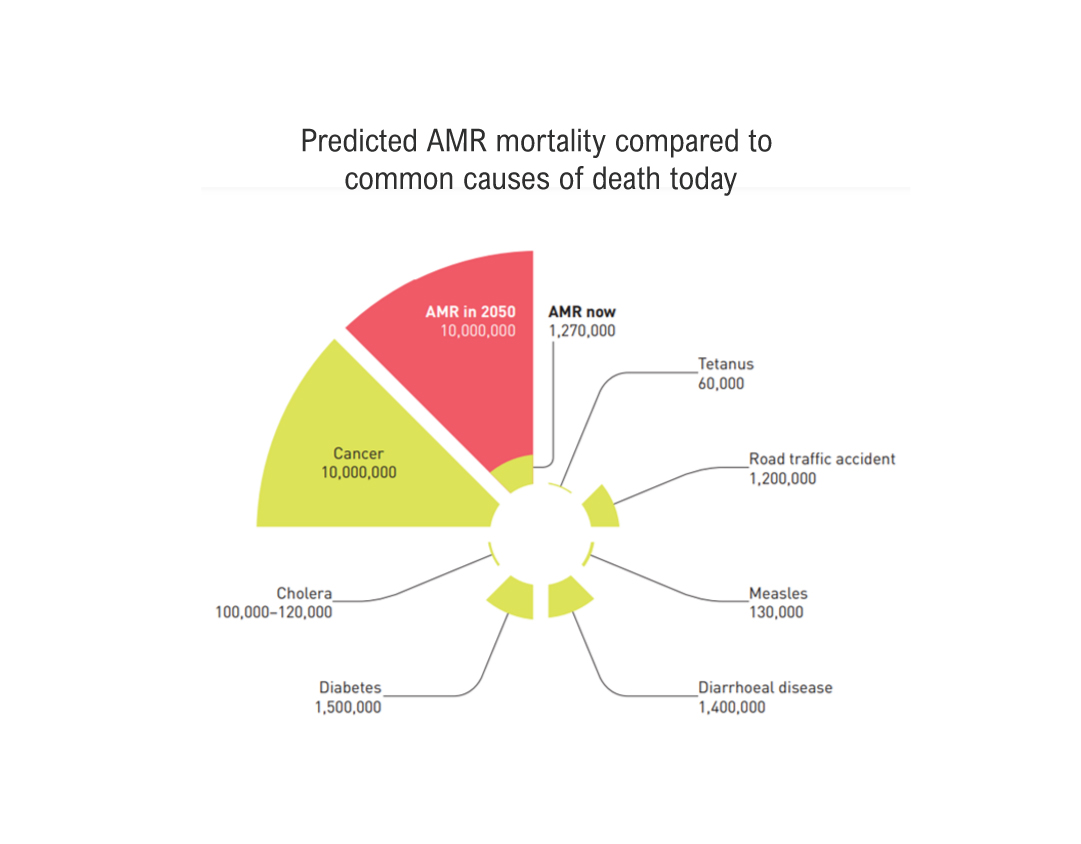Ahead of the Summit of the Future, UNGA78 and NYC Climate Week, September 2024
As we approach the Summit for the Future, the 79th Session of the United Nations General Assembly (UNGA79), and NYC Climate Week, the global community stands at a critical juncture. Two of the most pressing issues of our time—climate change and antimicrobial resistance (AMR)—are at the forefront of this year’s high-level discussions. Despite the increasing recognition that these two crises are deeply interconnected, efforts remain siloed. As global health and climate actors seek to accelerate efforts to achieve the new commitments set out in the upcoming Political Declaration on AMR (2024), the Pact for the Future, and the interconnected United Nations Sustainable Development Goals (SDGs) by 2030, research initiatives, investment strategies and health solutions must consistently integrate a lens to climate change. While neither crisis can be solved overnight, but will require a committed, long-term engagement, One Health strategies will help ensure the global population and health systems are not left ill-equipped to prevent or respond to an unprecedented public health and environmental crisis.

AMR threatens human and animal health, the environment, and market economies within societies. The World Health Organization (WHO) has listed AMR as one of the top 10 threats to global health. WHO estimates that 1.27 million deaths in 2019 are directly attributed to drug-resistant infection around the globe. New 2024 research from the Lancet suggests that if left unchecked, AMR infections could increase nearly 70% by 2050 – with the world seeing more than 39 million cumulative deaths between 2025 and 2050. This impact on populations will result in an additional loss of $3.4 trillion (about $10,000 per person in the US) of annual GDP and push 24 million people (about the population of Texas) into extreme poverty in the next decade.1
The threat of AMR lies in the rise and spread of infections that are difficult, or even potentially impossible, to treat with antimicrobial medicines. This threat will be further exacerbated by climate change, leaving people, particularly those in low-to middle income countries who will be disproportionably impacted by climate change, dying of infections that have been treatable for decades.
These challenges posed by climate change on AMR are beginning to surface through:
1. Rising Temperatures
Global warming is the crux of worsening climate change. As the average annual global temperature continues to rise from pre-industrial levels, getting closer to the 1.5o Celsius threshold, the impact of climate change will continue to worsen, including exacerbating drug-resistant diseases.
MacFadden et al., (2018) suggests that a 10°C increase in daily minimum temperature across 41 states in the U.S. increase AMR rates by 4.2% for certain pathogens. As the globe continues to warm amid climate change, rising local temperatures will continue to create conducive environments for bacteria survival, new bacteria growth, bacteria reproduction and increased mutation – increasing the likelihood the bacteria evolves to become drug-resistant.
2. Agriculture and Livestock Practices
Extreme climate conditions, including the emergence or re-emergence of communicable diseases, have pressured farmers and livestock producers to adapt – including the significant overuse and misuse of antibiotics to address and prevent disease outbreaks in livestock and promote growth. However, these farming practices give bacteria in agricultural ecosystems more opportunities to evolve and become resistant to these antibiotics.2 Additionally, drug-resistant pathogens can runoff from livestock and further contaminate water and soil, further exacerbating AMR and transmission of zoonotic pathogens between animals and humans.
3. Extreme Weather
Climate change increases incidence of extreme weather events that disrupt access to water, food, clean hygiene and sanitation practices and well-functioning health services. For example, as droughts increase malnutrition amid water and food shortages, especially among children, populations risk decreased immunity to fight off infections – increasing spread of infections.
Additionally, floods create a breeding ground for mosquito-borne disease and bacteria amid unsafe water and sanitation systems – increasing the spread of new drug-resistant infections, while disrupting access to safe health services for treatment.3,4
4. Increased Migration
Climate-induced displacement can facilitate the spread of resistant pathogens as populations move without information on their vaccines and immunizations, not completing courses of antibiotics, or being kept in conditions of poverty and overcrowding. This can put a strain on fragile healthcare systems that are ill-equipped to manage risks and remain vulnerable to vicious poverty cycles as country governments are forced to divert tight budget resources to address immediate health emergencies.
The breakdown of healthcare systems, distrust in the health system, and the increased spread of resistant infections could undermine decades of progress in global health. As climate change worsens, communities —especially in LMICs— will become more vulnerable to the impact of climate change, and the emerging and re-emerging diseases as a result.
